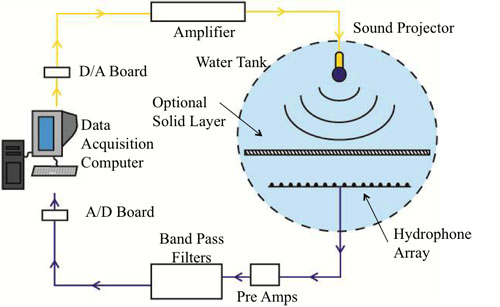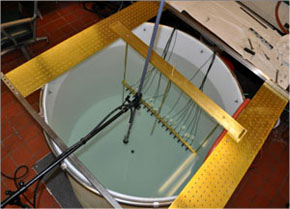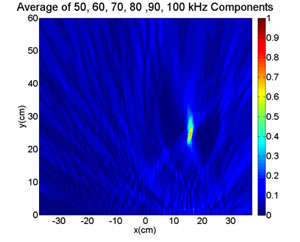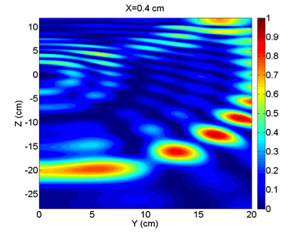Research: Acoustic Diagnostics for Reverberant Environments

Sponsor: NAVSEA through Naval Engineering Education Center (NEEC), and Office of Naval Research
Naval hardware is often tested for its hydrodynamic and hydroacoustic performance. However, acoustic measurements made in hydrodynamic test facilities are often difficult to interpret because of reverberation and noise. The goal of this project is to develop and experimentally validate acoustic detection and localization schemes for discrete sound sources and scatterers in noisy reverberant environments. This is an experimental and simulation development effort that involves a team of several undergraduate students and one or two graduate students. The current experiments are conducted in air (100 Hz to 10 kHz) in the laboratory, and in water (30 kHz to 200 kHz) in a 1.07-m-diameter 1.0-m-deep cylindrical water tank. Both pulse and long-duration signals are broadcast from one or two sound projectors, and are recorded with a receiving array of 16 microphones or hydrophones.
References:
Chang & Dowling, JASA 125, 3088-3100 [2009].
Haapaniemi et al., JASA 130, No. 4, Pt. 2, 2429 [2011].
Williamson, Haapaniemi & Dowling, NEJ 126, 103-107 [2014].
Flynn & Dowling, JASA 143, 1093-1101 [2018].
Flynn & Dowling, JASA 145, 3039-3047 [2019].



Current Research Projects
1. Predictions of Acoustic Uncertainty
2. Blind Deconvolution in Reverberant Environments
3. Nonlinear Techniques for Remote Sensing
4. Acoustic Diagnostics for Reverberant Environments
Recent Research Projects
5. Acoustic Coherent Backscatter Enhancement
6. Simulations of Washing Machine Processes
7. Turbulent Boundary Layers At High Reynolds Number
8. Multi-dimensional Measurements of Velocity during Thermoplastic Injection Molding
9. Beyond Line-of-sight Acoustic Sensing
10. Measurements of Oil-film Thickness